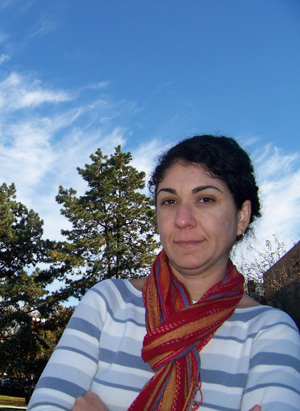New Course Targets Medical Professionals

In a city the size of Boston, where dozens of languages pierce the airwaves every day, communication barriers are not uncommon. This is a minor inconvenience when talking about the weather or giving directions, but this inconvenience can become deadly in a health crisis. A new BU course called Spanish for Medical Professionals is aiming to bridge this potentially harmful barrier.
The course, which was offered for the first time this summer, and is now offered in MET, is taught by Monica Simal, a Phd candidate in BU’s Department of Romance Studies. “The students are coming from so many different areas in terms of their careers, but most wanted to be able to communicate more easily,” says Simal, who is currently writing her dissertation. “This course allows them to approach (patients) more as human beings.”
And in just a few short weeks of instruction, the course is already achieving this goal, according to Simal’s students. “A lot of our patients only speak Spanish, and I’ve been actually able to apply what I’ve learned,” says pre-med senior Matthew Hall, who volunteers with an organization called Boston Health Care for the Homeless. “It’s been really cool, I start spitting out vocab words, and they understand me, then they start telling me about their week.”
The greater Boston area is home to more than 100,000 Latinos, a figure that represents 16.3 per cent of the city’s population. This segment also ranks as the fastest growing “ethnic” group from 2000 to 2008, according to figures from the Mauricio Gaston Institute for Latino Community Development and Public Policy.
“There is a huge Spanish-speaking population that needs to be helped,” says Simal. Naturally, this group requires health care, but the industry hasn’t necessarily kept pace with demand when it comes to the provision of services in Spanish. This becomes a problem when someone is suffering a health crisis and accuracy and speed are essential in obtaining the relevant information. And while hospitals generally have interpreters on staff, they aren’t always immediately available and if they are, this adds another barrier to communication. In order to ascertain important details such as what happened and family history, the professional must quickly establish a rapport and build trust immediately.
“If a doctor speaks to a patient, there has to be an element of small talk so the patient can relax, and they can get down to the nitty-gritty,” says Sue Griffin, head of the Spanish Language Program. “This course provides you with very specific content. But we are not trying to teach our medical professionals how to do their job,” she says, adding that it intends to provide tools to facilitate these professionals when they are on the job.
And that intent to provide useful information is exactly the mandate of the course, says Griffin, who has no medical background, but perused dozens of textbooks to devise the curriculum.
Indeed, this is the most advantageous element, says Dr. Robert Vinci, who attended Simal’s inaugural course this summer, and is vice-chairman of pediatrics at BU Medical School, and Director of Pediatric Medical Services at Boston Medical Centre. “I’m much, much more comfortable with speaking Spanish with my Spanish-only patients, and it has allowed me to be more responsible and more efficient with care.”
In contrast to most introductory language courses, this one adopts a practical and pragmatic approach. For example: students engage in role-playing games. On one rainy November evening, pairs of students acted out weighing a baby and diagnosing heart problems, while their peers tried to figure out these actions using the proper terminology. Students also learn vocabulary that is tailored to situations they may encounter in their profession. For example: they learn verbs such as to break, to sprain, to hurt, etc. Another twist to this course is the fact that they are dealing with a live language that varies culturally. As a result, there are numerous ways to say the same thing. For example, the common cold can be referred to as ‘la gripe,’ ‘la gripa,’ or ‘catarro.’ “Trying to communicate with a language that is so alive is difficult,” says Simal, especially when it comes to confronting a myriad of cultural perspectives. “The students all want to know ‘what should I do in this situation? They want to know, what about if you just have to break the ice?”
Simal’s students agree that this goal of easing the lines of communication is one of the most essential components of providing health care. “This course is really unique and I really appreciate it,” says senior Luwan Ghidei. “I plan to be a physician and I think it’s important to be able to communicate with your patients.”